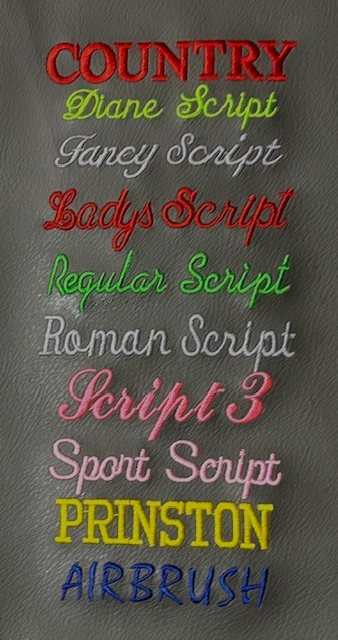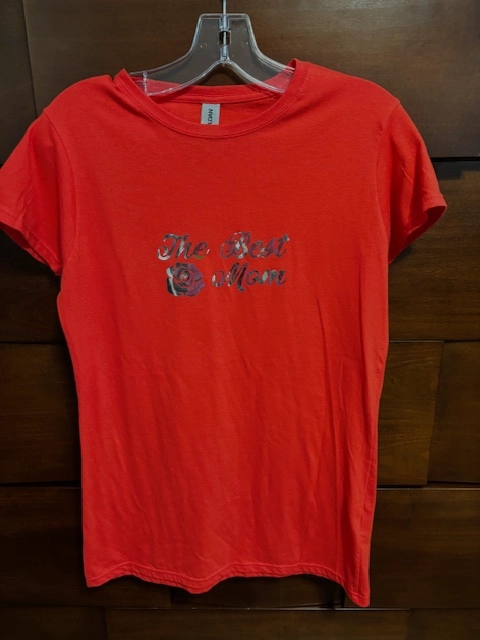Elegant Monogramming on Towels for a Touch of Luxury
Wiki Article
The Art of Custom-made Needlework: Opening the Secrets to Creating Special and Remarkable Styles
Embroidery, a craft steeped in practice and virtuosity, holds within its complex stitches the power to transform textile right into a canvas of special expression. The tricks to developing customized needlework designs that mesmerize the eye and leave a long-term perception depend on a fragile equilibrium of technique, imagination, and attention to detail. As we dive right into the globe of custom embroidery, we discover the nuanced interplay in between thread option, sew complexity, and design personalization that raises a plain garment to an artwork. Join us on a trip through the art of custom needlework as we unravel the mysteries behind crafting genuinely unforgettable and distinctive productions.Selecting the Right Needlework Threads
When choosing needlework strings, what essential aspects should you take into consideration to make sure the most effective results for your customized designs? The selection of needlework thread is critical in determining the final end result of your embroidered design. Among the main factors to consider is the product of the thread. Different materials such as cotton, polyester, rayon, and silk use differing levels of luster, longevity, and structure. It is important to pick a thread material that enhances the material you are stitching on and lines up with the preferred look of the layout.
Thicker strings can add measurement and appearance to your style, while finer threads are perfect for complex information and tiny message. Additionally, taking into consideration the shade fastness and washability of the thread is important to guarantee that your custom designs maintain their high quality and vibrancy over time.
Checking Out Various Stitch Techniques
To dig right into the realm of 'Exploring Different Stitch Techniques', one must understand the details and subtleties that each sewing method gives the art of embroidery. Different stitch strategies not just add aesthetic interest but also add to the total structure and dimension of the design. One preferred stitch technique is the satin stitch, which entails closely stuffed parallel stitches to create a smooth and glossy surface area, suitable for completing forms and creating vibrant outlines.On the various other hand, the backstitch is a versatile strategy often used for describing and adding great details. It involves stitching in reverse to create a strong line of needlework. Furthermore, the French knot stitch adds a responsive aspect to layouts, excellent for creating distinctive accents like flower centers or attractive touches.
Exploring different stitch techniques permits embroiderers to have fun with light, shadow, and depth within their layouts, raising the aesthetic allure and artistic quality of their needlework jobs. By understanding different stitching methods, one can unlock endless possibilities for developing unique and unforgettable custom-made embroidery pieces.
Incorporating Personalized Design Aspects
Having actually explored the intricacies of various stitch strategies such as the satin stitch, backstitch, and French knot, the emphasis currently changes in the direction of incorporating personalized style elements in personalized embroidery jobs. Individualized layout components play an essential duty in making embroidery projects really distinct and memorable. One method to integrate customization is by adding initials, names, or substantial days to the layout. This not just adds a customized touch but likewise improves the sentimental worth of the embroidery piece.An additional way to integrate tailored style aspects is by including icons or concepts that hold unique meaning to the recipient or mirror their passions and personality. As an example, incorporating a favored blossom, animal, or hobby-related sign can make the needlework design a lot more meaningful and customized. Furthermore, picking colors that resonate with the recipient or line up with the desired theme can even more improve the customization of the needlework job.
Mastering the Art of Shade Coordination

One trick aspect of color control is understanding shade theory. This includes recognizing how different shades interact with each other, the feelings they share, and how they can be incorporated to develop visually appealing layouts. By applying shade theory concepts, embroiderers best made to measure suits can produce harmonious shade palettes that improve the general appearance of the layout.
Additionally, focusing on comparison is critical in shade sychronisation. Utilizing contrasting shades can aid certain elements of the style pop, boost clarity, and create an aesthetically dynamic embroidery piece. By grasping the art of color control, embroiderers can raise their layouts and produce remarkable pieces that reverberate with clients and viewers alike.
Enhancing Texture With Advanced Embroidery Stitches

French knots, for instance, are excellent for adding tiny, increased dots to your layout, resembling the appearance of grains or creating a textured surface. Bullion knots, on the various other hand, can be used to create twisted, ropelike elements that add a glamorous feel to the embroidery. Seed stitching involves tiny, scattered stitches that can fill out areas with a multicolor structure, while turkey work produces fluffy, dimensional accents evocative pet hair or vegetation. Try out these sophisticated embroidery stitches allows you to push the boundaries of typical needlework and develop absolutely one-of-a-kind and aesthetically attractive structures in your designs.
Verdict
To conclude, the art of customized embroidery entails a combination of picking the appropriate strings, exploring numerous stitch methods, including tailored style elements, understanding color control, and enhancing appearance with sophisticated stitches. By recognizing and carrying out these key aspects, embroiderers can develop special and memorable styles Visit Website that display their creativity and ability. Embroidery lovers can unlock the tricks to developing stunning and custom items that stick out and made to measure tuxedo leave an enduring impression.Report this wiki page